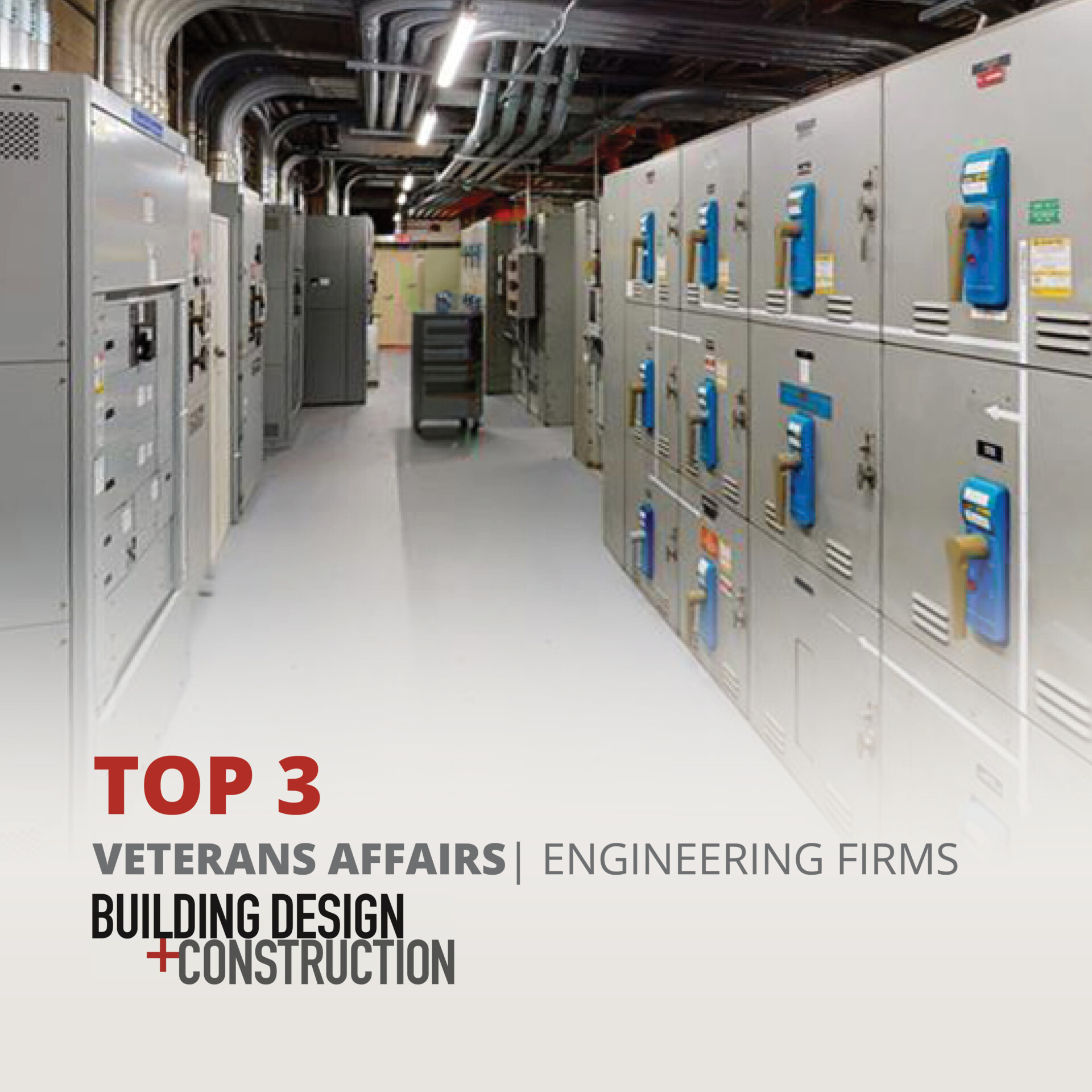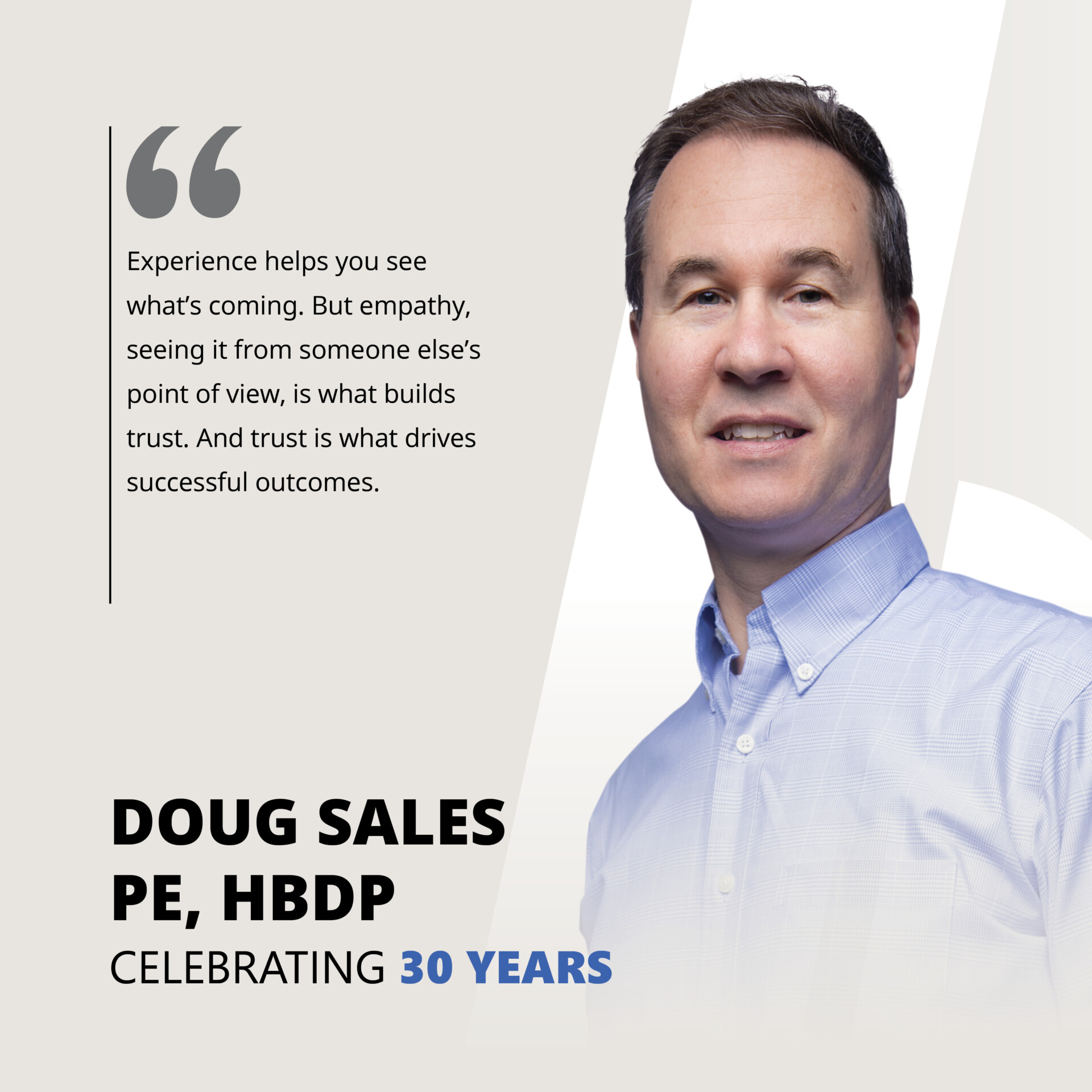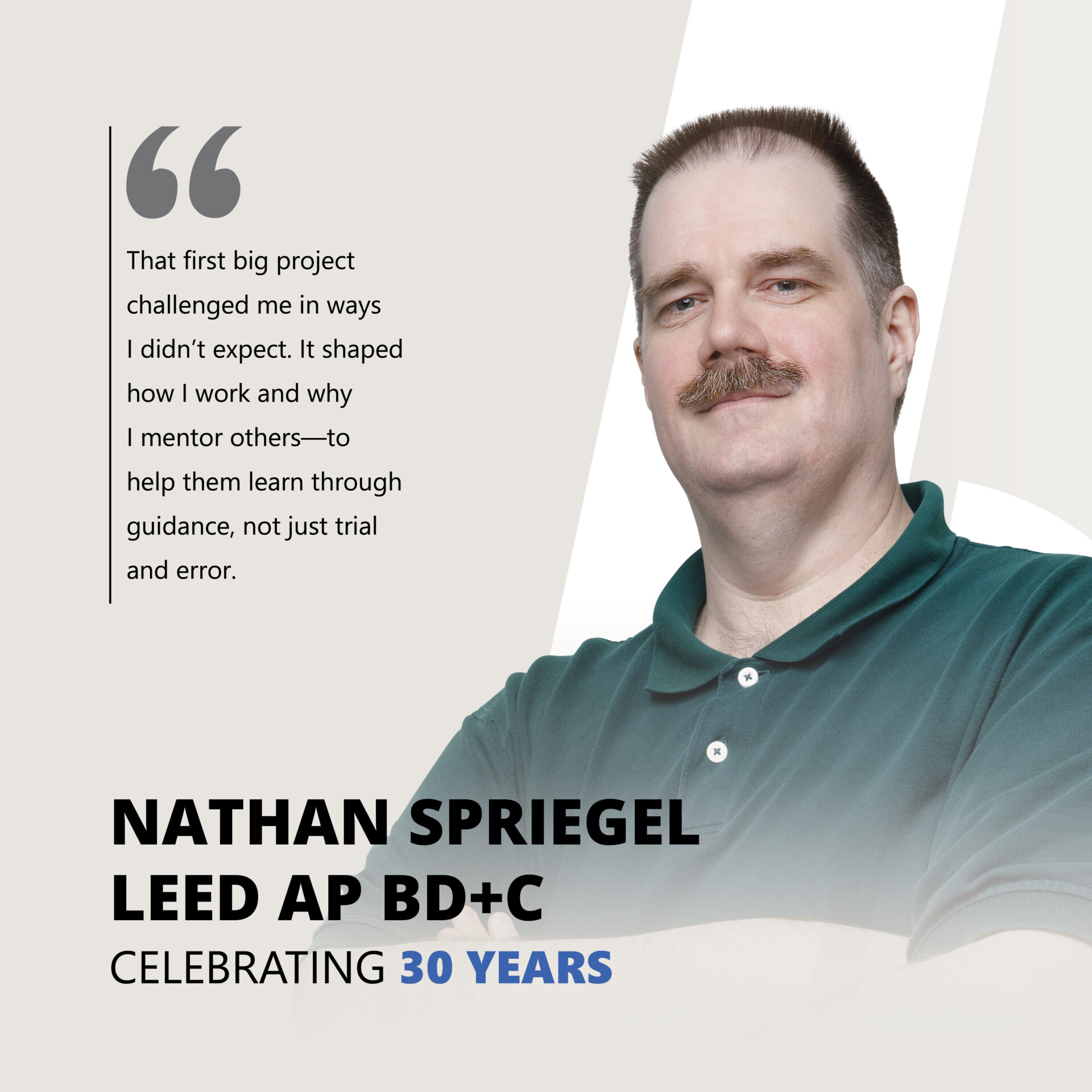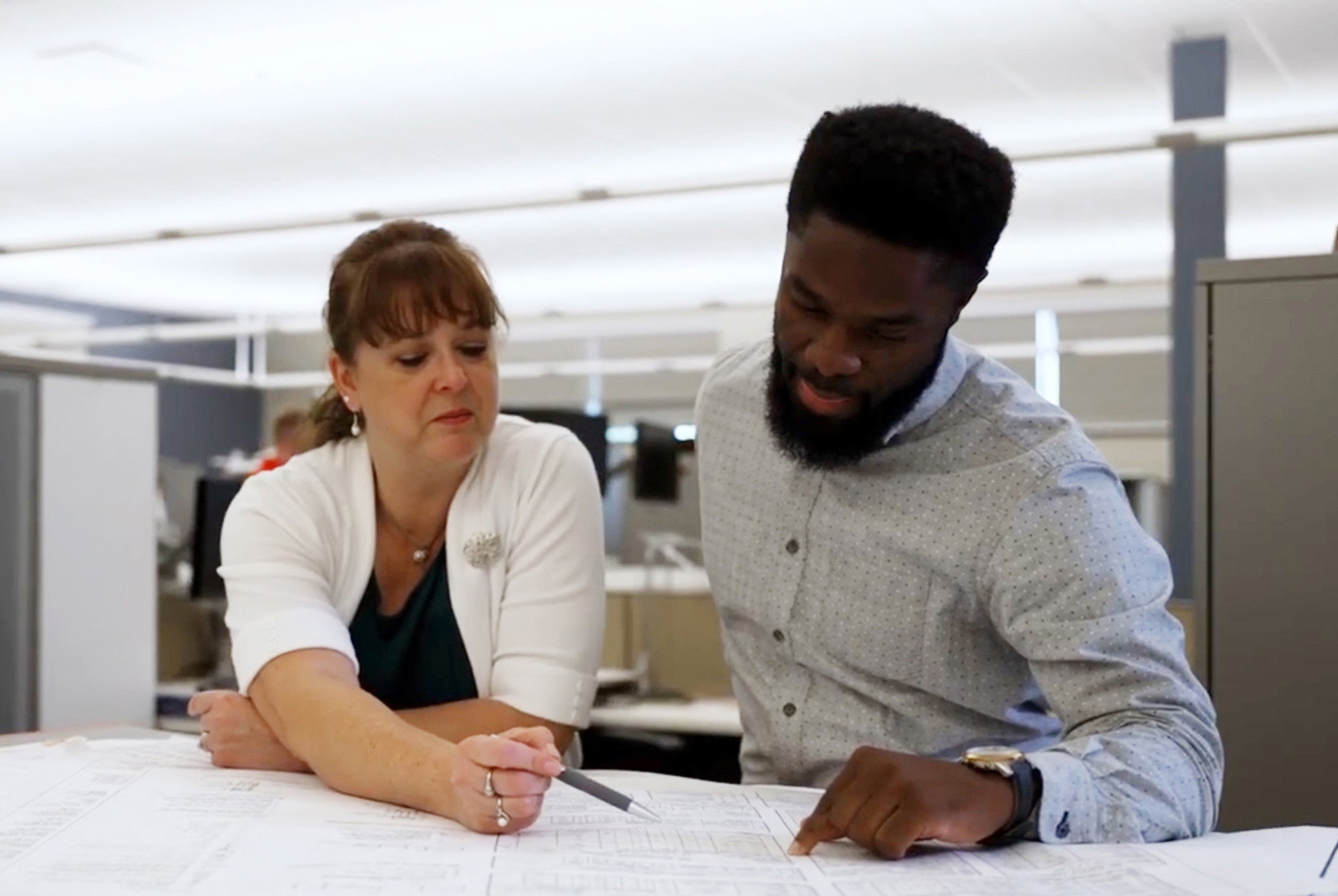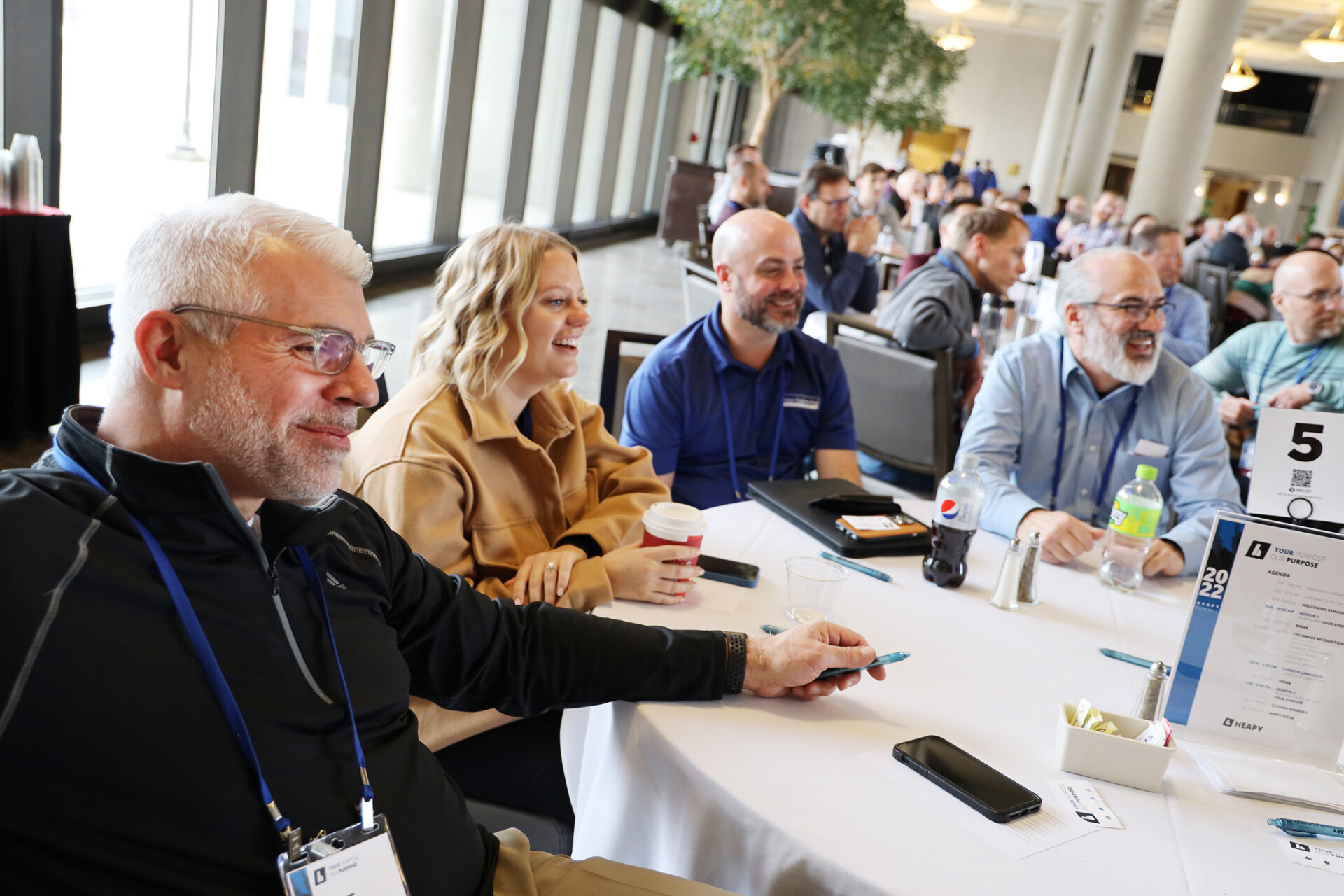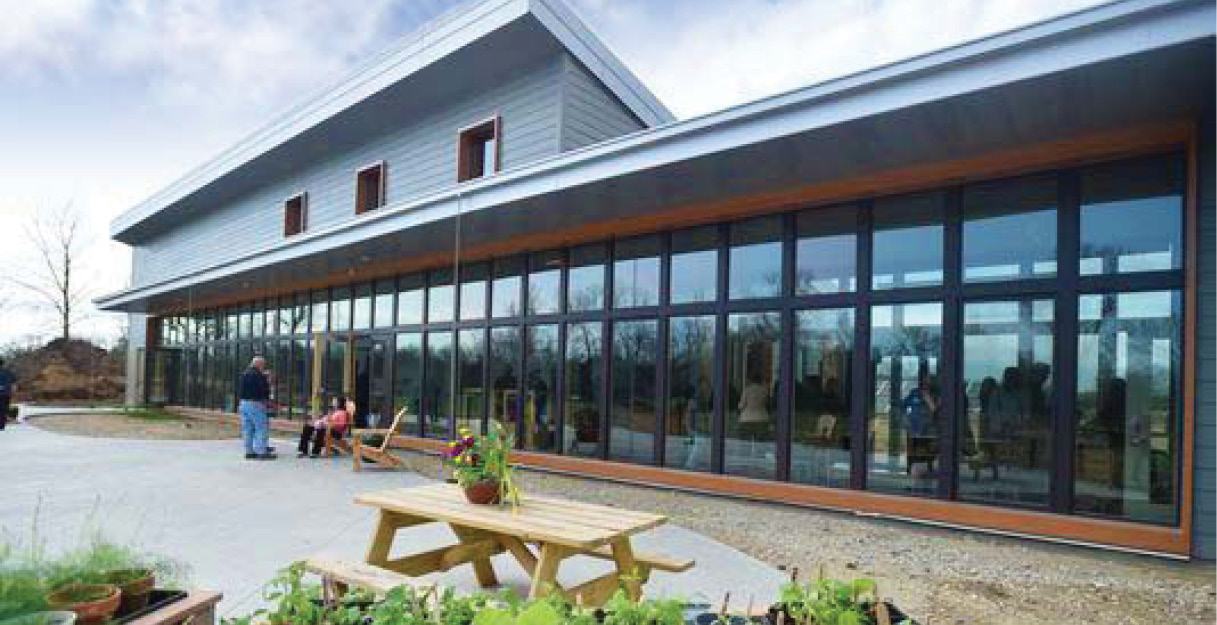
HEAPY’s project, Cope Environmental Center, has officially achieved Net Positive! The facility has been designed to meet the Living Building Challenge standards, intended to have no more effect on the environment than a field of flowers.
In addition to achieving Net Positive, this project has received Honorable Mention from the ASHRAE Technology Awards in the Education Facility New Category and by the USGBC Southwest Ohio Region for their Sustainability & Energy Smart Awards in the Sustainable Design Team category for a Commercial New Construction project. Team members include: LWC Architects, HEAPY, JPS Consulting Engineer and COOR Consulting.
The Cope Environmental Center (CEC) is a 7,000 SF facility that expands the Center’s capacity for environmental programs, serves as a community gathering space, and acts as a powerful teaching tool for sustainable living in East-Central Indiana.
The CEC’s Mission is to promote the sustainable use of the earth’s resources through education, demonstration and research. Their Vision is to inspire and challenge individuals and communities to achieve ecologically sustainable lifestyles to secure a sustainable future for all life on earth. They do this by educating children in their 130-acre outdoor classroom through interactive, hands on sustainability and nature-based programming for schools and other groups. The Center partners with businesses, universities and other non-profits to teach the principles of sustainability. They demonstrate this green lifestyle by making their own biodiesel from used restaurant oil, giving tours of their own Sustainable Living Demonstration Home (that is powered by solar power and geothermal), applying strict green practices for their offices and many other ways!
The newly completed facility has a dedicated classroom that houses the technical components necessary for long-distance learning, water/soil testing and hands-on learning. Each piece of the building is a teaching tool including the water reclamation system, passive solar design and ultra-high efficiency building materials. A large multipurpose room serves several functions including a host site for summits, community functions and educational space for visitors.
Designing to the Living Building Challenge, which limits the use of VOC’s, PVC and other compounds unfriendly with our environment, required finding acceptable substitutes for common building materials and construction oversight to ensure installed materials complied.
The following are the major design elements that work towards the goal(s) of the Living Building Challenge standards and achieving Net Zero:
- High Performance Building Envelope
- LED Lighting Systems
- Strategically designed over-hangs to limit solar gain
- 32 Kw PV Array
- Ground Source Heat Pumps
- Radiant Heating and Cooling
- Low Flow Plumbing Fixtures
- Potable Well Water
- Septic Leach Wastewater
The ground source heat pumps are coupled to nine (9) 300-foot deep closed-circuit wells. The three (3) heat pumps are utilized to provide heating and cooling to the occupied spaces, supplemented by radiant heating and cooling. Outdoor air is pre-conditioned by energy recovery ventilators to minimize the load on the mechanical systems. However, operable windows can be used instead of the main systems when the weather permits, providing the occupants with the benefits of natural ventilation.
By calculation estimates, the CEC needed slightly over 30 Kw of PV to operate as Net Zero. The CEC elected to go with 20 Kw for the first season to see how close they could get. The building did get to a very low measured and verified EUI of 3.69 for 2018, not quite 0, so another 12 Kw of PV has been installed to get them past the finish line, achieving Net Zero!
Sustainability Impact
With minimal operating costs resulting from a nearly Net Zero building, the CEC was able to sustain their Mission and Vision goals of promoting sustainable use of the earth’s resources through education, demonstration and research and inspiring individuals and communities to achieve ecologically sustainable lifestyles.
The project was connected to the community via locally sourced materials, including countless individual volunteers for labor and donated materials, continued by educating children through interactive, hands on sustainability and nature-based programming. They also partnered with businesses, universities and other non-profits to teach the principles of sustainability.
